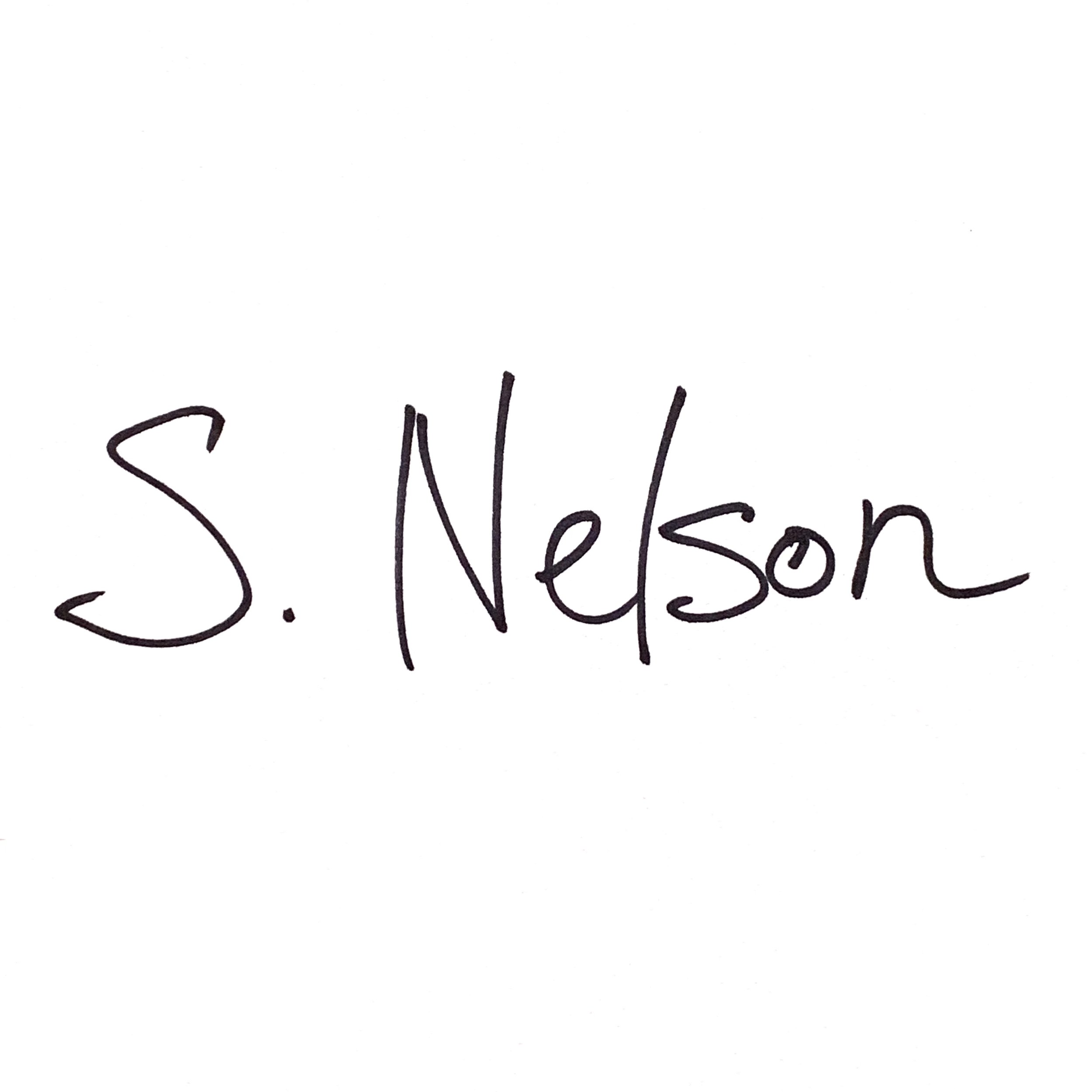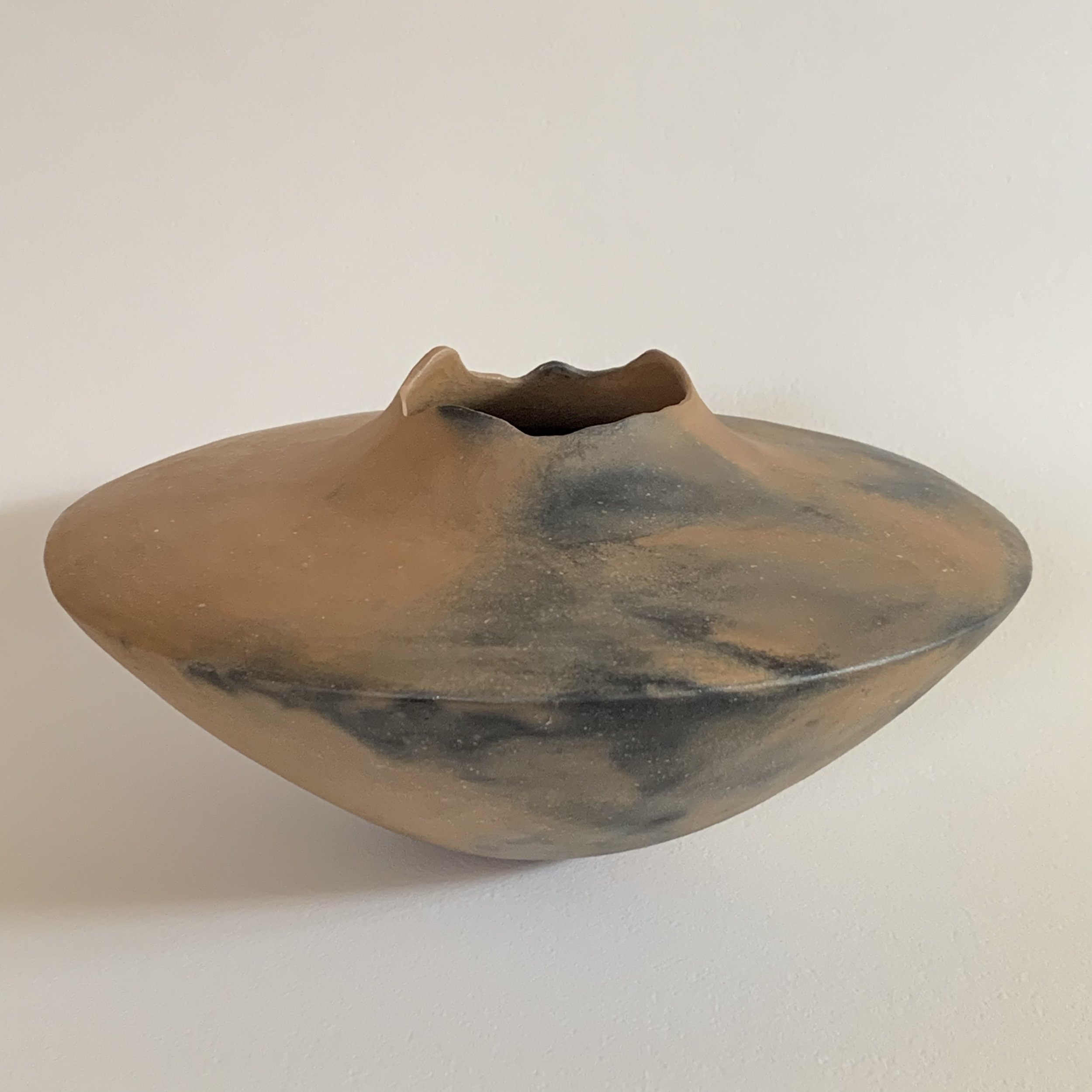
Clay & Glazes
Susan Nelson began her journey with clay hand building with earthenware. After briefly experimenting with the potter’s wheel, she realized that the slow, meditative, process of making pinch pots and constructing forms from slabs better suited her temperament.
Early in her career, Susan enriched her hand building skills by taking workshops in New Mexico, learning Native American coil building techniques and above ground primitive firing with wood.

Interest in using real fire (Susan is a longtime campfire fan!), prompted her to experiment with both Raku and “pit firing” (using a perforated popcorn can).

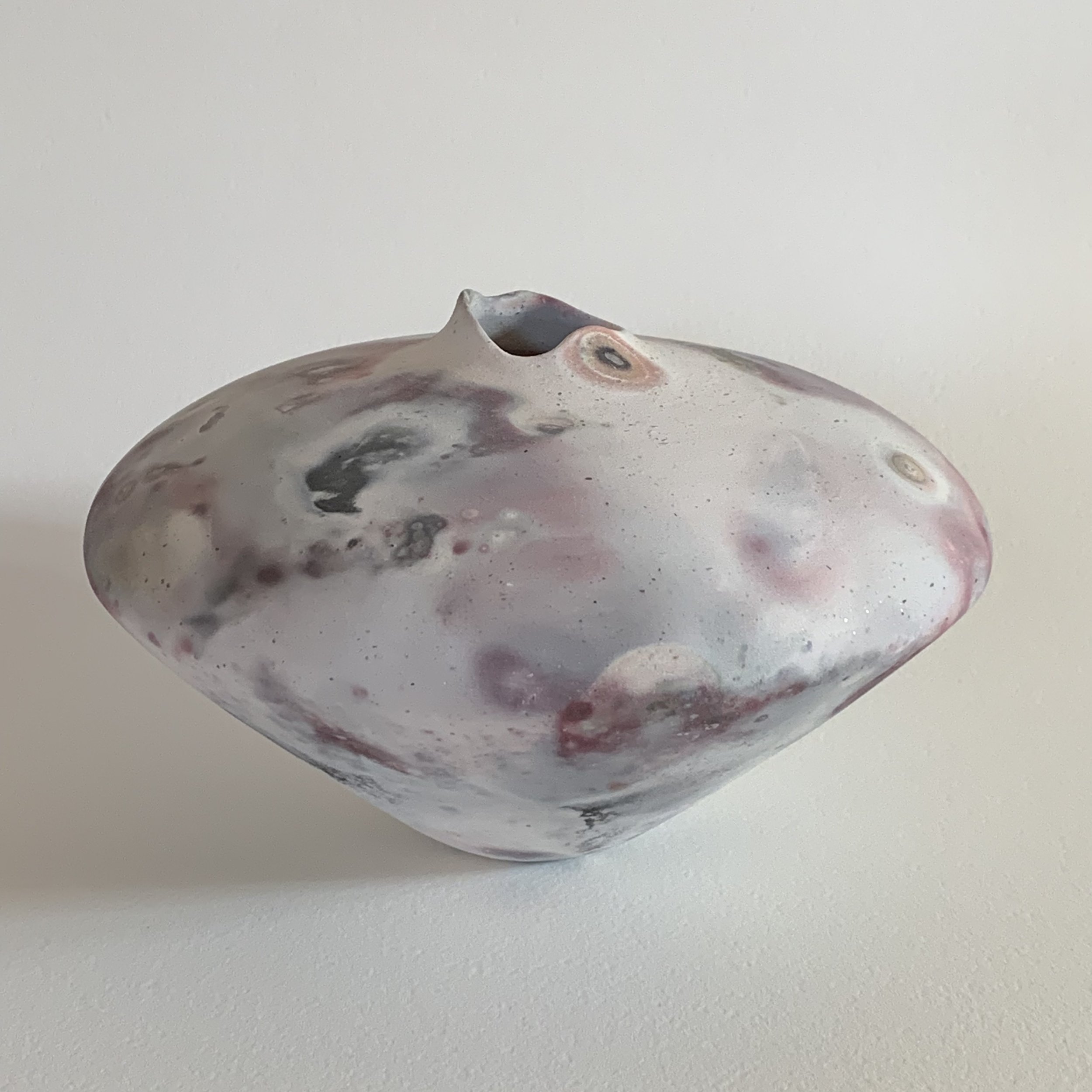
While enjoyable, Susan’s interest in these techniques, which are primarily decorative, waned. However, forms designed for use and fired to sturdy high temperatures held a long lasting appeal for her.
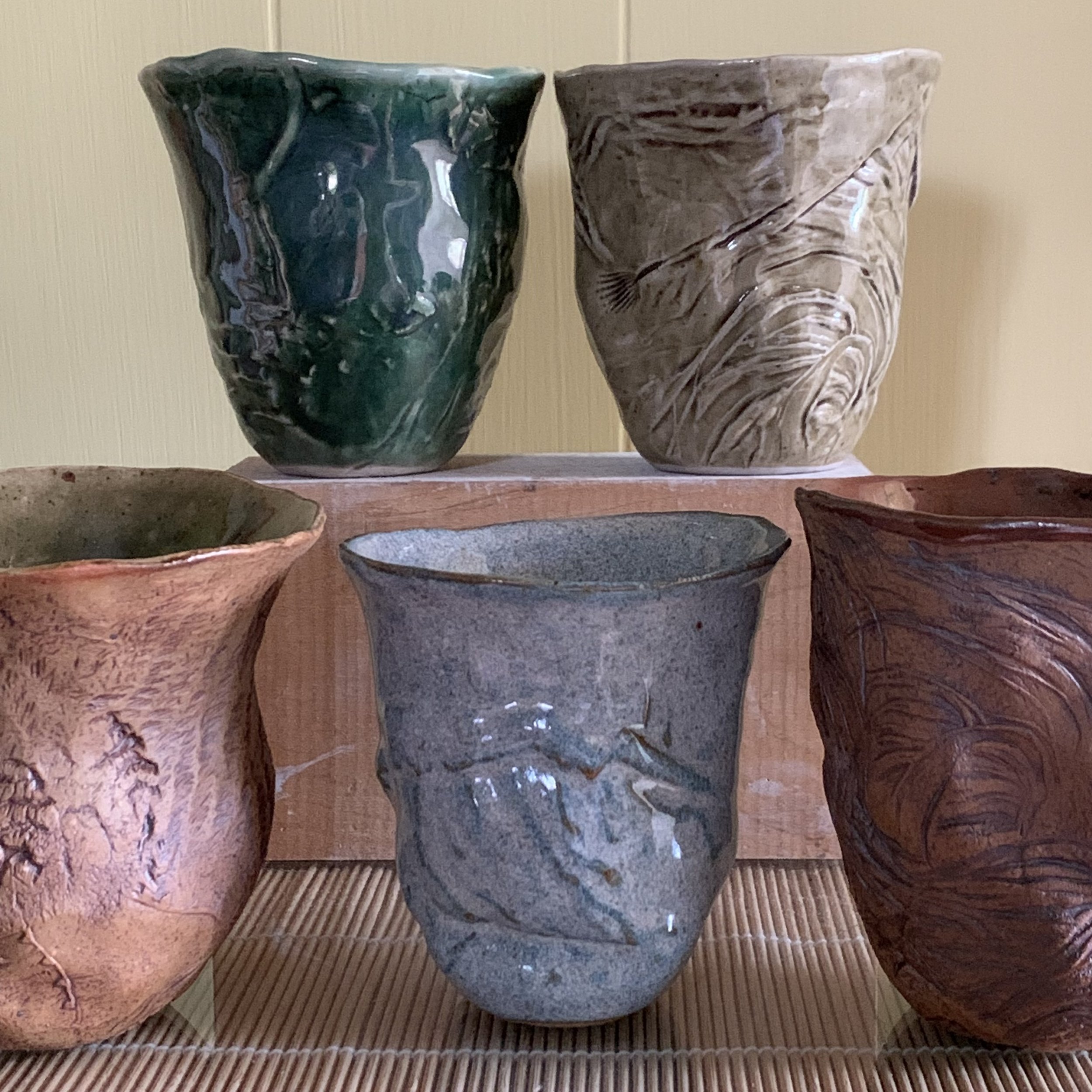

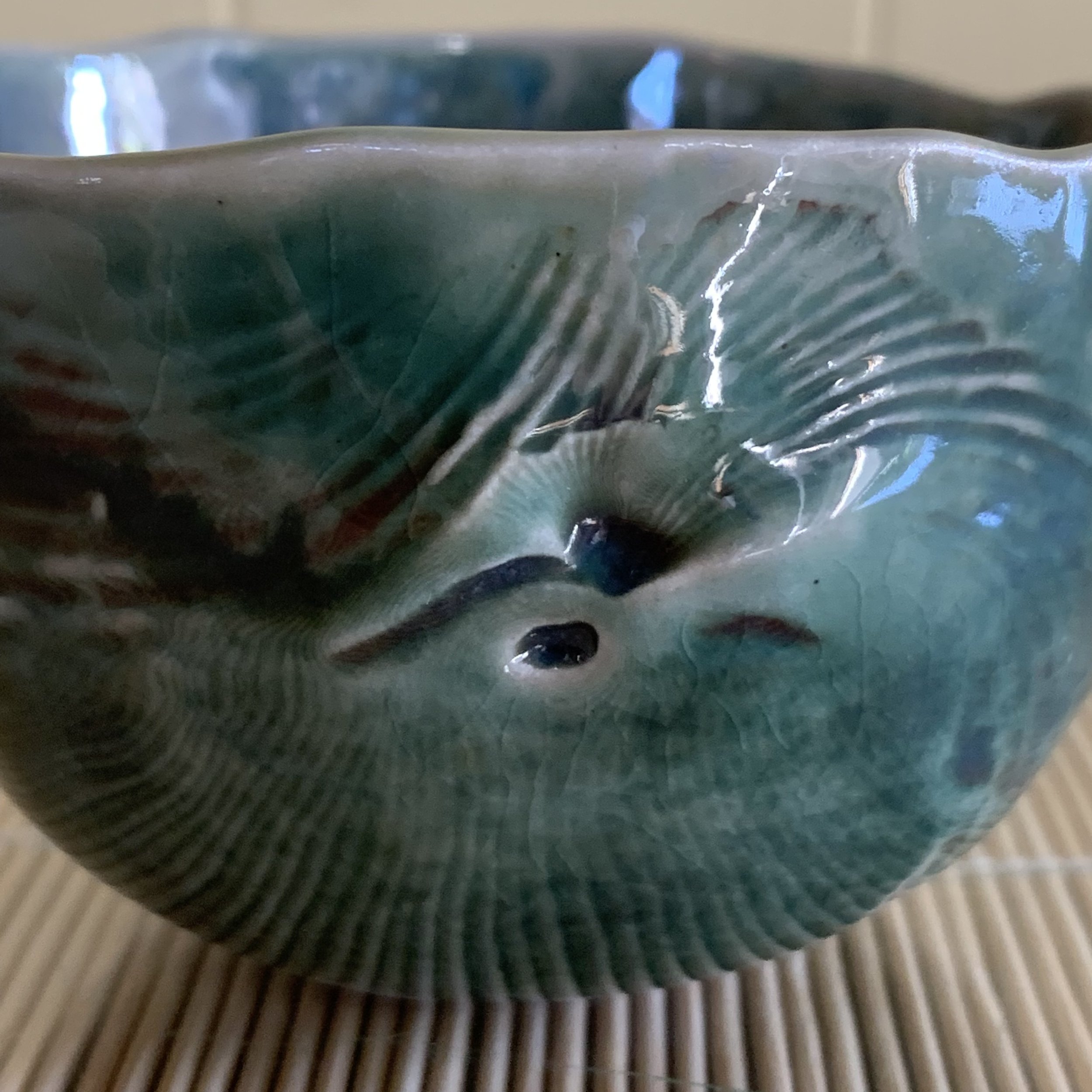
Susan’s favorite clay is stoneware fired to cone 10 in a gas fired kiln, however, she also uses a midrange stoneware, and earthenware (for some of the Island vases). Glazes have been formulated or chosen to enhance the textures created in the forming process.

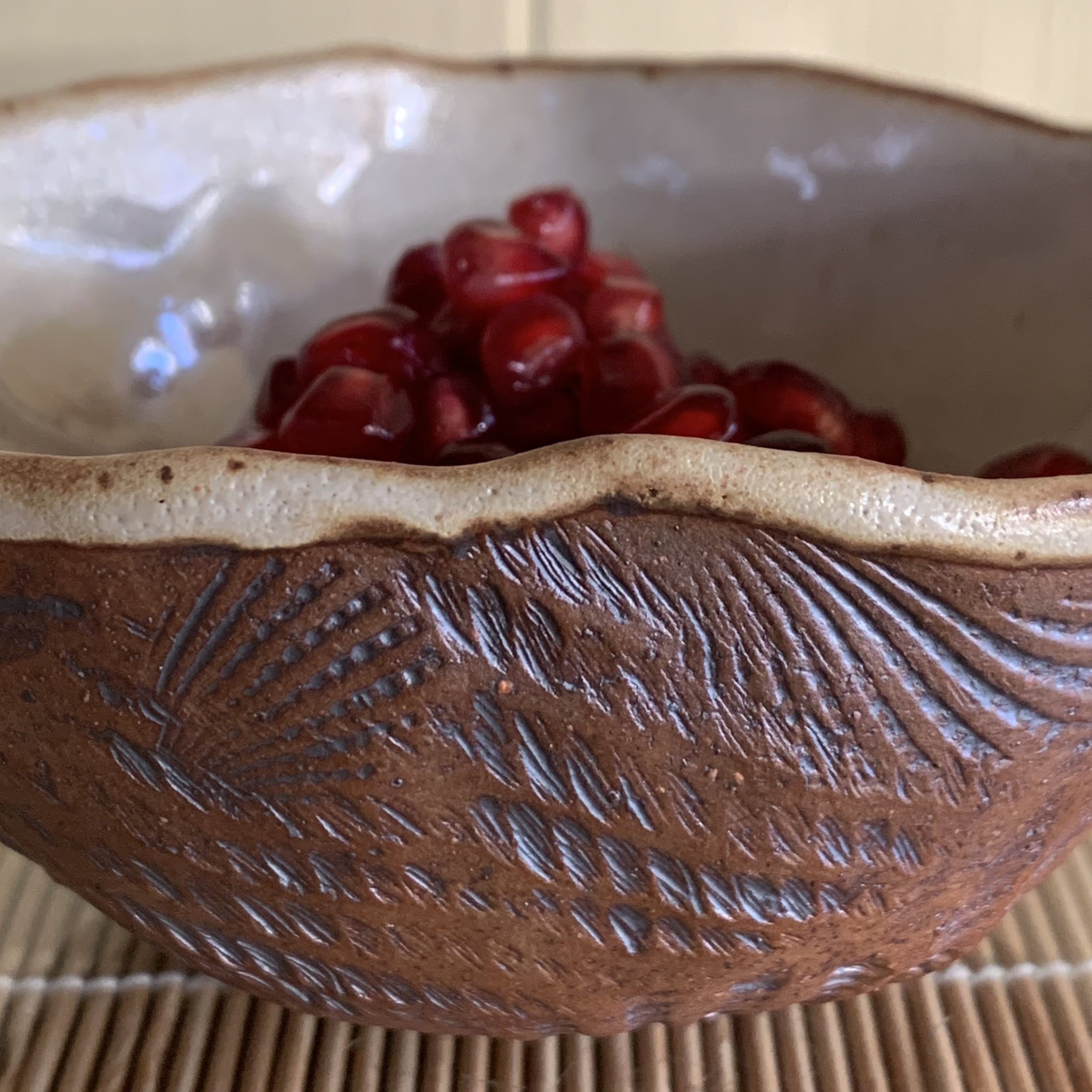
Bisque pieces are dipped in large buckets of glaze and transported to her gas kiln where she usually fires over a hundred pieces at once. The 12-14 hour firing cycle is monitored every half hour to produce the reduction atmosphere color richness she adores.

